
Advertising & Brands
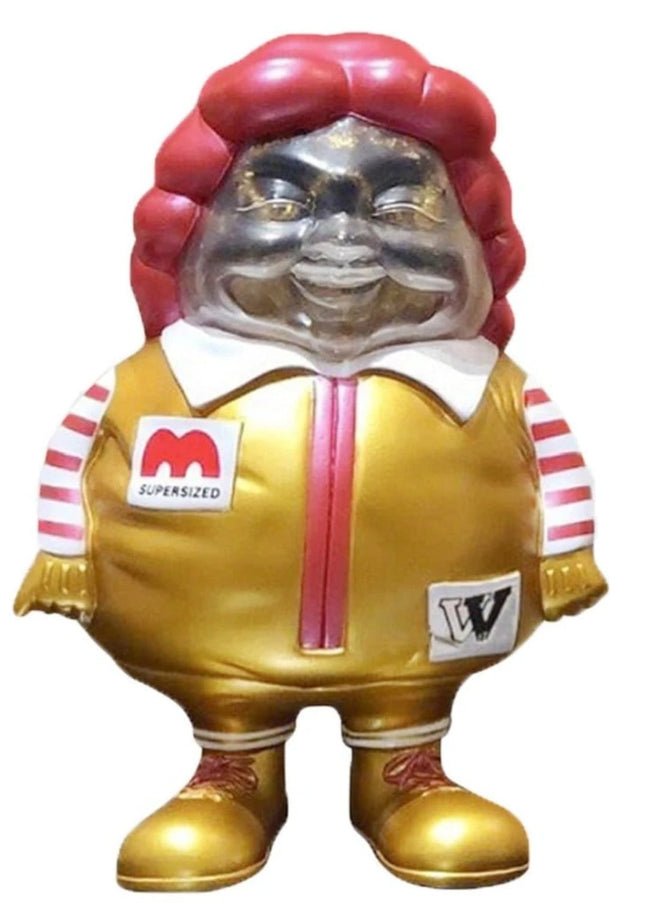
Ron English MC Supersized Gold Glitter Skull Logo Art Toy by Ron English
MC Supersized Gold Glitter Skull- Logo Limited Edition Vinyl Art Toy Collectible Artwork by street graffiti Ron Ron English x Toy Tokyo x Secret Base. 2021 MC Supersized Gold Glitter Skull by Toy Tokyo x Secret Base - W Logo. Made in Japan Sofubifeaturing a sparkly gold glitter design with a translucent face and inner gold glitter skull. There are two variants of the edition, regular and one with the ‘W’ logo of Secretbase’s new Osaka store on the lower pocket. Brand New in Unopened Packaging
$438.00
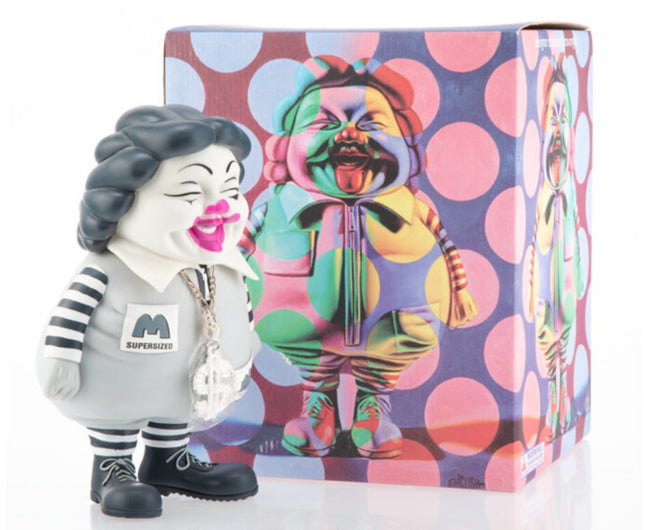
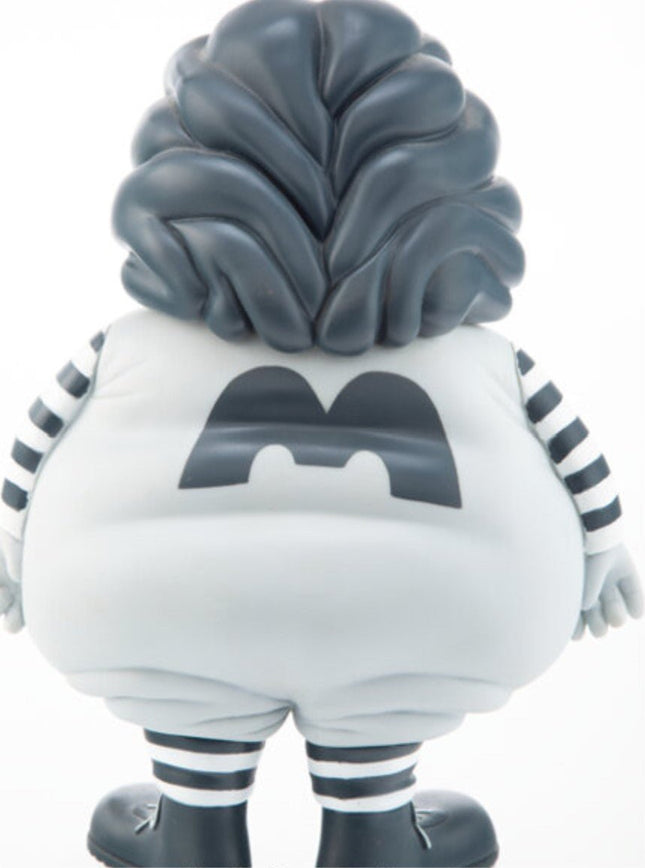
Ron English The Showroom NYC MC Supersized Mono Grey Art Toy by Ron English
The Showroom NYC MC Supersized- Mono Grey Grin Limited Edition Vinyl Art Toy McSupersized Collectible Artwork by street graffiti artist Ron English. Ron English X The Showroom NYC MC Supersized (Mono Grey), 2004 Painted cast vinyl 9-1/2 x 8 inches (24.1 x 20.3 cm) Edition of 100 Produced by The Showroom NYC, New York "From Ron's website, "MC Supersized was English's hijacking of a popular fast food restaurant's mascot. Since then, MC Supersized has become one of Ron's most iconic images, having been featured in his paintings, posted on billboards, and used in the hit documentary Supersize Me." The Showroom NYC was Toy Tokyo's gallery space. They were the first to release Ron's iconic character in three-dimensional form. Three of the four colorways are being offered at Heritage for the first time. This character has been in production from over a dozen companies in every conceivable size and material since 2004 but these are the most significant limited editions of this character. If you are looking for the Mickey Mantle rookie card of one of the most significant artists of our time, this is it." -Dov Kelemer
$572.00
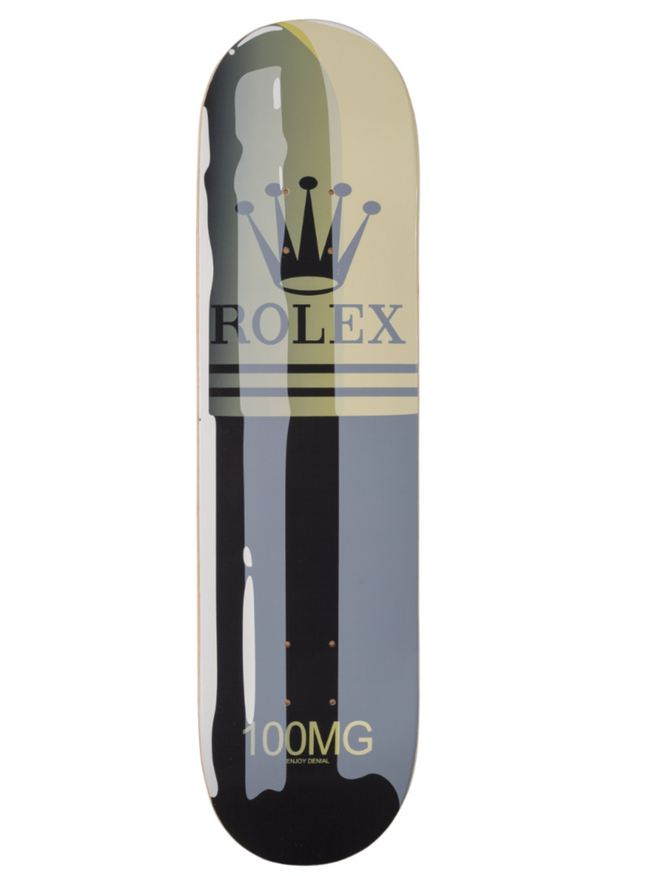
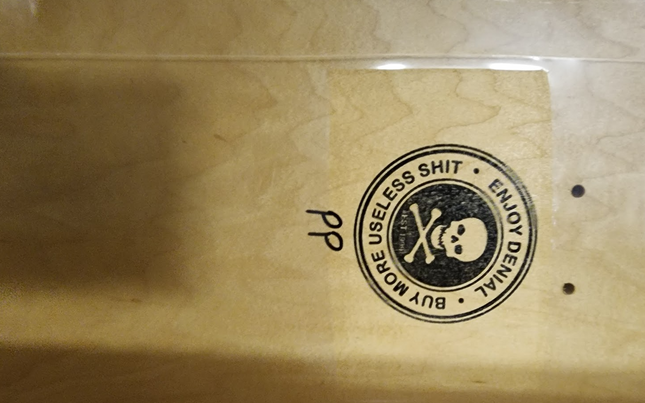
Denial- Daniel Bombardier Rolex Designer Drugs PP Skateboard Art Deck by Denial- Daniel Bombardier
Rolex Designer Drugs PP Printers Proof Skateboard Art Deck by Denial- Daniel Bombardier Limited Edition Archival Print on Wood Skateboard Deck by Street Artwork Graffiti Artist. PP Printers Proof 2018 Marked PP Limited Edition Signed COA Skateboard Artwork Size 8x31 Skateboard Art Deck Featuring The Rolex Logo in Pill Form. Rolex Designer Drugs PP Printers Proof Skateboard Art Deck stands as a testament to the fusion of street culture, contemporary art, and iconic branding. Crafted meticulously by Denial, the pseudonym of Canadian artist Daniel Bombardier, this piece marries the subversive tone of street and graffiti art with high-end branding – a juxtaposition that has been a recurring theme in the world of pop art. Denial's ability to weave these seemingly disparate elements showcases his keen eye for culture, irony, and the potency of symbols in today's consumer-driven society. The 2018 piece, bearing the 'PP Printers Proof' mark, signifies its exclusivity as a limited edition. These proofs are preliminary versions of a printed piece, offering an insight into the artist's process and ensuring that the final prints meet the desired standards. Furthermore, it comes with a Certificate of Authenticity (COA) and is signed, offering collectors a tangible connection to Denial himself. Measuring 8x31, the skateboard deck is not just a canvas but a symbol of street culture. The deck, though an unusual choice for many traditional artists, is perfectly in sync with Denial's roots in street and graffiti art. At its center, the piece features the Rolex logo, but not as we know it. Reimagined as a pill, it comments on society's obsession with luxury and the lengths to which people might go to attain or showcase affluence. The use of the pill form, synonymous with quick fixes and temporary highs, poses questions about the fleeting nature of luxury and the societal pressures of branding. A brilliant embodiment of pop culture, luxury branding, and street art, the Rolex Designer Drugs Skateboard Art Deck by Denial is more than just a visual treat. It's a critique, a conversation, and a testament to the evolving nature of art in the 21st century.
$1,225.00
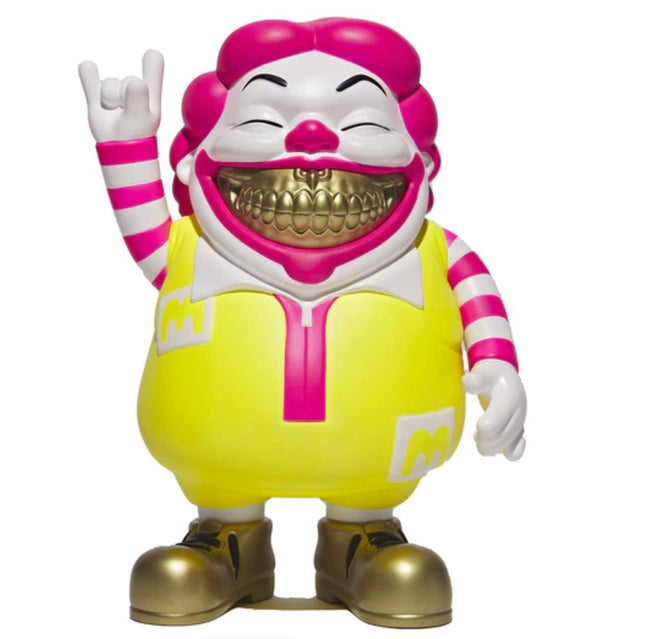
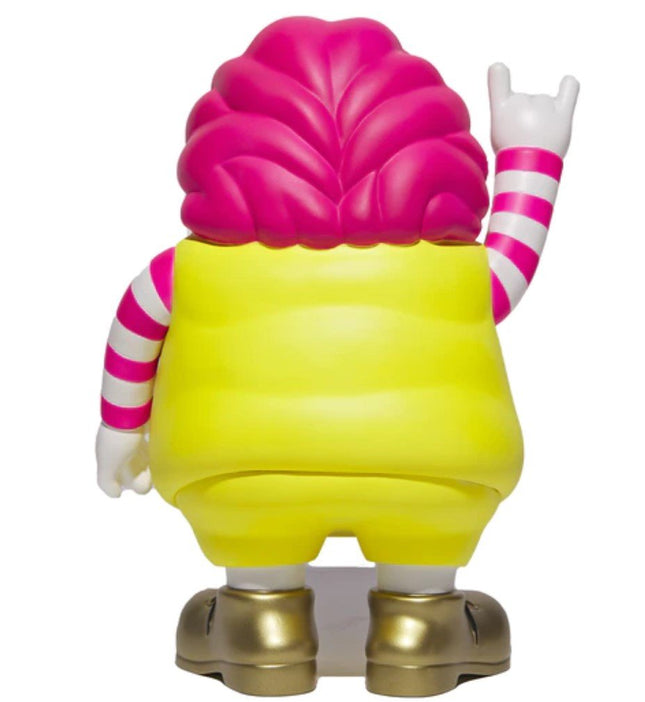
Ron English Neon MC Supersized Grin Art Toy by Ron English
Neon MC Supersized Grin Limited Edition Vinyl Art Toy Collectible Artwork by street graffiti artist Ron English. Neon MC Supersized Grin' by Ron English, 2020 Collab. with toymaker Made by Monsters. 10 x 7" x 5" Inches Collectible soft vinyl art figure. Limited Edition NTWRK Exclusive colorway.
$406.00
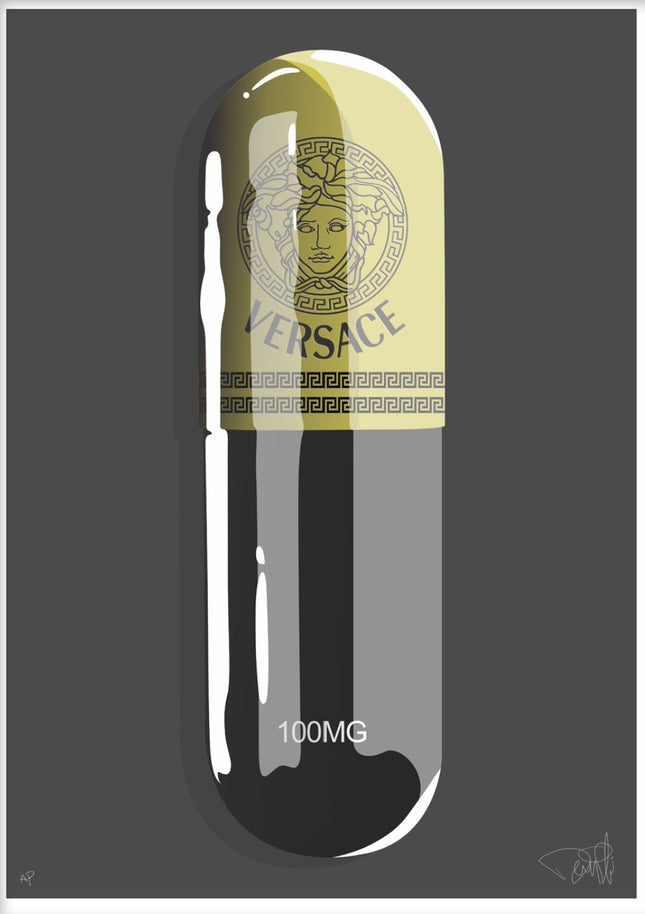
Denial- Daniel Bombardier Fashion Addict Refill Versace 2 AP Archival Print by Denial- Daniel Bombardier
Fashion Addict Refill- Versace 2 Limited Edition Archival Pigment Fine Art Print on 330gsm Canon Fine Art Paper by Legend Street Art and Modern Pop Culture Artist Denial. AP Artist Proof 2019 Signed Limited Edition of 100 Artwork Size 18x24 Versace 2 Designer Fashion Drug Pill. AP Artist Proof Numbered, Signed, Stamped on Reverse, Normal Edition of 100, 18x24, Archival Pigment Print on 330 GSM Canon Fine Art Paper. Essentially, Denial is satirizing the reality, which both he and us are experiencing, through some of the Western culture’s most emblematic symbols. Denial is utilizing cultural products with the intention to make a statement against the system, which gave birth to them. As a result, he re-contextualizes them and transforms them from commercial products to his cultural legacy.
$529.00
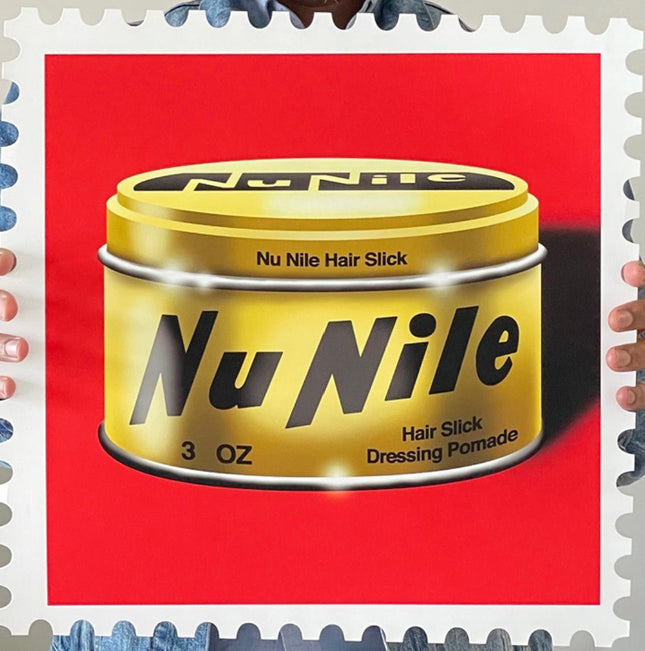
Darien Birks Nu-Nile Archival Die Cut Print by Darien Birks
Nu-Nile Die-Cut Archival Pigment Fine Art Limited Edition Print on 290gsm Moab Fine Art Paper by Artist Darien Birks Urban Street Artwork. 2022 Signed & Numbered Limited Edition of 25 Artwork Size 16x16 "I think these images belong on a stamp because of their nostalgic value amongst those that grew up in a community similar to my own. The thought of what they represent make most people smile when they see the art. They bring back memories of when we wanted to look our best, how we wanted to present ourselves to the world at that particular time. When one pomade didn't give us the look that we were trying to achieve (primarily waves), we'd switch to another one—it would create debates about which was the best. The bold colors and interesting use of typography on the tin can packaging were other details of interest, they were iconic, and I wanted to recapture that." –Darien Birks
$316.00










